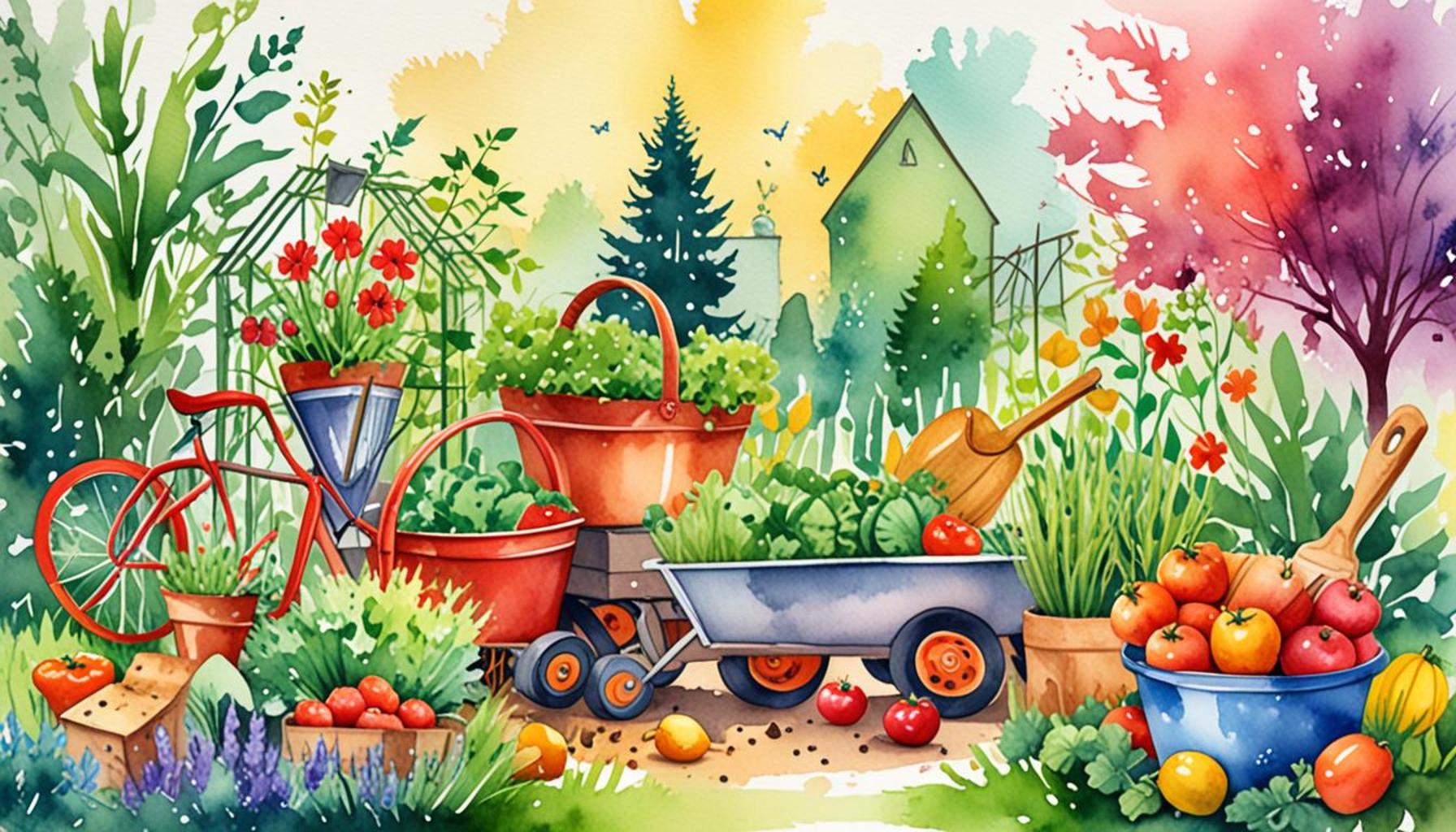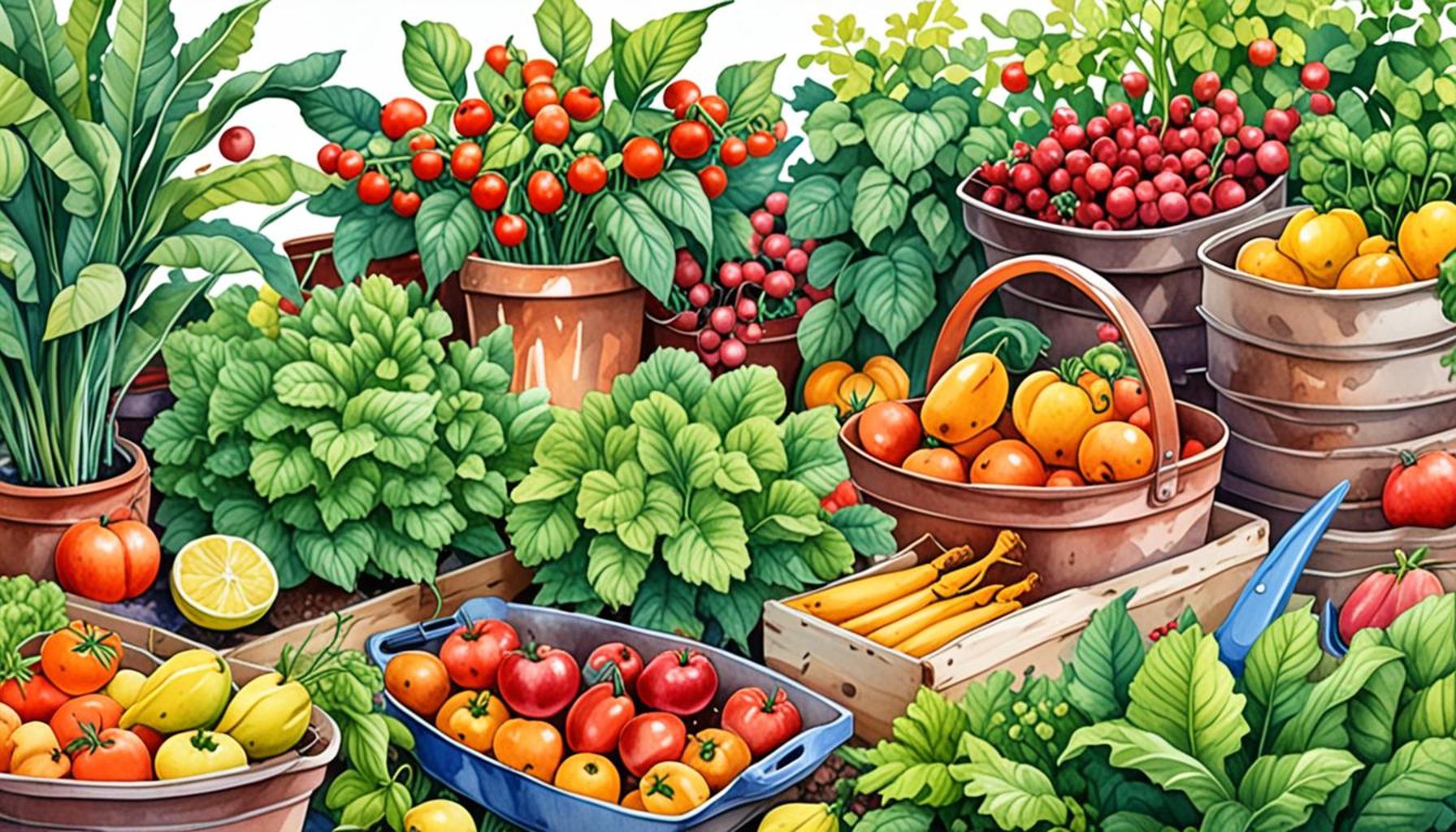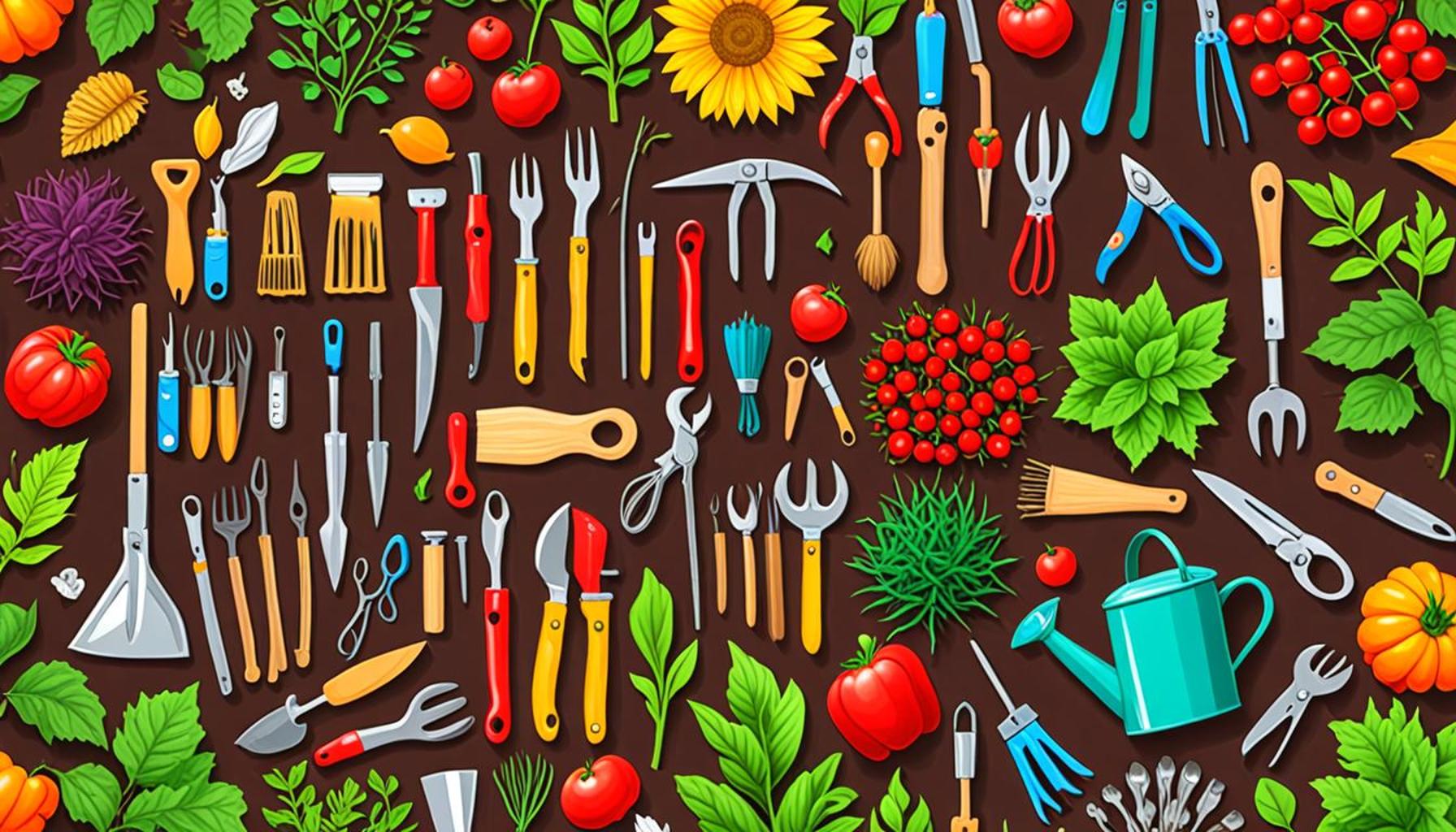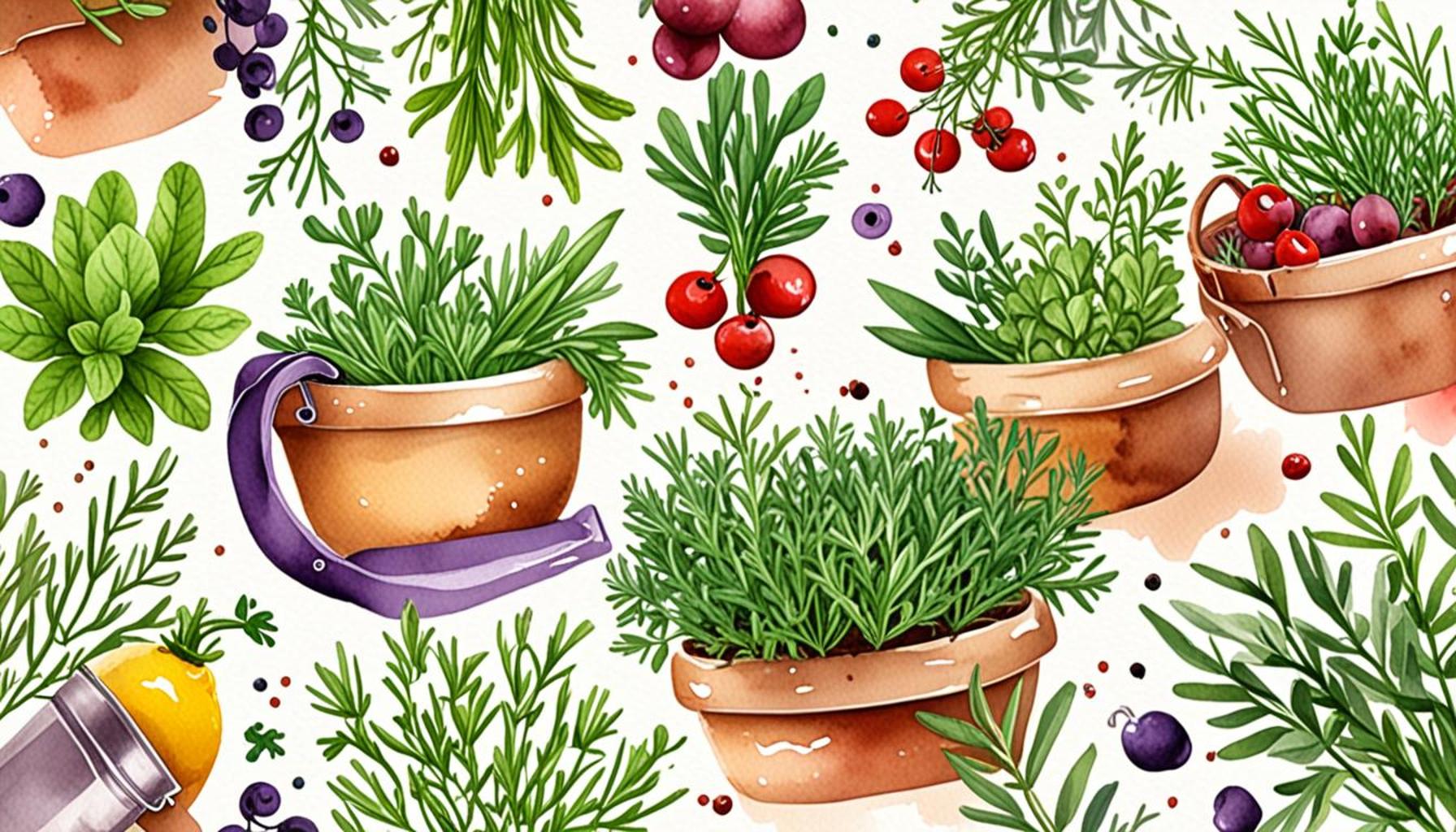Sustainable Harvesting Methods: Ensuring the Health of Your Garden

Understanding Sustainable Harvesting
In recent years, the gardening community has become increasingly aware of the importance of sustainable harvesting methods. These practices are not just about producing food; they encompass a holistic approach to maintaining the delicate balance of nature. By integrating sustainable techniques, gardeners can ensure that they are working in harmony with the environment, contributing to ecological health while growing nutrient-rich crops.
The significance of soil health cannot be overstated. Practices such as crop rotation—where different types of crops are planted sequentially on the same land—help to replenish nutrient levels naturally and minimize pest outbreaks. For example, planting legumes after heavy feeders like corn can restore nitrogen levels in the soil, effectively enhancing fertility. Moreover, employing cover crops like clover or rye during off-seasons not only protects the soil from erosion but also enriches it as these plants decompose, adding organic matter that is essential for vigorous plant growth.
Enhancing Biodiversity
Another critical aspect of sustainable harvesting is the enhancement of biodiversity. A diverse garden supports a variety of species, creating a robust ecosystem that can fend off pests naturally. When you invite an array of plants into your garden, you also attract beneficial insects such as ladybugs and bees, which play a vital role in pollination. For instance, incorporating flowering plants like marigolds or sunflowers can significantly increase the presence of these helpful pollinators, ultimately boosting your crop yields and improving overall plant health.
Maximizing Resource Efficiency
Resource efficiency is yet another pillar of sustainable practices. Adopting techniques such as rainwater harvesting can dramatically reduce water consumption in your garden. By collecting rainwater from gutters into barrels, you provide a sustainable source of hydration for your plants, especially during dry spells. Similarly, composting kitchen scraps and yard waste leads to nutrient-rich soil amendments while minimizing landfill waste. This circular approach to resources not only nourishes your plants but also contributes to a reduction in your carbon footprint.
Embracing sustainable gardening practices is essential for future generations, ensuring a healthier ecosystem for all living beings. As you explore and implement these methods, you will likely uncover a plethora of knowledge and insights, leading to a garden that is not only productive but a thriving part of your local environment. The journey toward sustainability is filled with innovation and discovery, encouraging every gardener to become a steward of the land.
DIVE DEEPER: Click here for essential tips on selecting balcony plants
Integrating Sustainable Practices in Your Garden
When it comes to sustainable harvesting methods, understanding the systems in place in your garden is crucial. Each practice contributes significantly to the overall health and productivity of your gardening space. One of the most straightforward methods is companion planting, which refers to the strategic placement of different plants in proximity for mutual benefit. This technique can promote growth, deter pests, and even improve flavor. For instance, planting basil alongside tomatoes not only enhances the tomatoes’ taste but also repels harmful insects such as aphids and spider mites.
Additionally, the aspect of integrated pest management (IPM) cannot be overlooked. IPM combines various methods to manage pests in the most environmentally responsible way. This approach involves monitoring pest populations and identifying them accurately, allowing for targeted interventions. Such interventions may include:
- Natural Predators: Introducing beneficial insects like lacewings and predatory mites can help keep pest numbers low.
- Biological Controls: Utilizing organic pesticides derived from natural sources can minimize the impact on non-target organisms.
- Cultural Practices: Managing planting schedules and crop spacing can help reduce pest habitats while enhancing plant vigor.
Moreover, mulching plays a pivotal role in preserving soil moisture and suppressing weeds, making it an essential component of sustainable gardening. By applying organic materials such as straw, wood chips, or shredded leaves, gardeners can create a protective barrier that nurtures the soil’s ecosystem. This method not only enhances soil quality but also promotes healthy root development in plants.
Seasonal Planting and Timing
The timing of your harvest is another critical factor in sustainable harvesting. Understanding the seasonal cycles of your crops allows for more effective planning. Seasonal planting maximizes yields by ensuring crops are grown during their optimal growing periods. This practice helps prevent pest issues and diseases, ultimately resulting in healthier plants and increased harvest quality. For instance, planting cool-season crops like lettuce and spinach in early spring ensures they thrive before summer heat takes its toll.
Moreover, timing your harvest means gathering fruits and vegetables at their peak ripeness, which not only boosts flavor but also ensures the nutritional value remains intact. This concept ties back to the overarching goal of sustainability, as the health of your garden directly translates to the health of your household.
Incorporating these sustainable harvesting methods into your gardening routine not only fosters a flourishing garden but also nurtures your connection to the environment. As you explore these various practices, you’ll find that small adjustments can yield significant benefits, creating a bountiful and resilient garden that stands the test of time.
Sustainable Harvesting Methods: Expanding Your Knowledge
Incorporating sustainable harvesting methods into your gardening routine is not just about conserving resources; it also promotes biodiversity and enhances soil health. By understanding the nuances of your garden’s ecosystem, you can adopt practices that enrich the environment while yielding abundant produce.
Companion Planting
One of the most effective sustainable harvesting techniques is companion planting. This method involves pairing plants that benefit one another, either by deterring pests or enhancing growth. For example, planting basil alongside tomatoes can improve the flavor of the tomatoes and repel harmful insects. This practice not only optimizes space in your garden but also minimizes the need for chemical pesticides.
Crop Rotation
Another vital aspect is crop rotation, which helps maintain nutrient levels in the soil. Altering the arrangement of different crops each growing season prevents the depletion of specific nutrients and reduces pest and disease prevalence. For instance, following nitrogen-fixing legumes with leafy greens can significantly enhance soil fertility.
Sustainable Harvesting Table
| Method | Benefits |
|---|---|
| Companion Planting | Enhances growth and deters pests naturally. |
| Crop Rotation | Maintains soil fertility and reduces disease risk. |
Understanding and implementing these methods will not only boost your garden’s productivity but will also contribute positively to the global movement towards sustainability. When you embrace these practices, you foster a healthier growing environment that benefits both plants and the ecosystem at large. These strategies pave the way for gardeners to cultivate thriving gardens while ensuring the long-term health of our planet.
DISCOVER MORE: Click here for great tips on plant selection and arrangement
The Role of Soil Health in Sustainable Gardening
Maintaining soil health is essential in the discussion of sustainable harvesting methods. Healthy soil serves as the backbone of a thriving garden, providing essential nutrients that plants need to grow strong and resilient. One of the most effective ways to enhance soil health is through the practice of crop rotation. By alternating the types of crops planted in a specific area each season, gardeners can prevent soil nutrient depletion, disrupt pest and disease cycles, and enhance biodiversity. For example, following nitrogen-fixing crops like peas or beans with heavy feeders such as tomatoes or corn ensures that nutrients are balanced throughout the seasons.
Incorporating cover crops into your gardening routine is another excellent strategy for preserving soil vitality. Cover crops like clover, vetch, or rye can be sown during the offseason to cover bare soil. They prevent erosion, improve soil structure, and when tilled back into the ground, enrich the soil with organic matter. This practice not only contributes to an enhanced nutrient profile but also fosters a thriving ecosystem within the soil, teeming with microorganisms and beneficial insects.
Water Management Techniques
Efficient water management is a fundamental aspect of sustainable harvesting. Overwatering can lead to nutrient leaching and exacerbate issues related to mold and mildew. Adopting drip irrigation systems provides a precise method to deliver water directly to the plant roots, thus minimizing water waste and maximizing efficiency. This targeted approach not only conserves water but also reduces weed growth as the surrounding soil remains relatively dry.
Moreover, implementing rainwater harvesting techniques can further enhance your garden’s sustainability. By collecting rainwater from rooftops or other surfaces in barrels or tanks, gardeners can provide a natural and cost-effective irrigation source. Rainwater is often warmer than groundwater and free from the chemicals found in municipal supplies, thus benefiting plant health and vigor.
Embracing Organic Amendments
The use of organic amendments like compost and worm castings serves as another pillar of sustainable gardening practices. Composting allows you to recycle kitchen scraps and yard waste while enriching the soil with nutrients and beneficial organisms. Earthworm castings, rich in minerals and microbial life, can boost your plants’ growth rates and overall health. Regularly incorporating these organic materials not only improves the soil structure but also enhances its ability to retain moisture, further promoting robust plant growth.
In alignment with organic practices, consider utilizing natural fertilizers made from fish emulsion, kelp extract, or bone meal. These alternatives provide essential nutrients while minimizing the negative ecological footprints associated with synthetic fertilizers. Protecting the natural balance of your garden ecosystem ultimately leads to better quality produce and a more sustainable growth environment.
Each of these practices—soil health management, efficient water usage, and the incorporation of organic amendments—contributes to the overarching goal of ensuring a healthy and flourishing garden. By exploring and implementing these methods, gardeners can cultivate their plots responsibly while enjoying the myriad benefits that sustainable practices offer.
DISCOVER MORE: Click here to learn how proper harvesting can enhance plant health
Conclusion: Cultivating a Sustainable Future
In conclusion, the journey towards sustainable harvesting methods is not only essential but rewarding for gardeners committed to preserving both their crops and the environment. By integrating practices such as crop rotation, cover crops, and efficient water management, gardeners can actively contribute to a healthier ecosystem. These methods ensure that vital nutrients are replenished in the soil while promoting resilience against pests and diseases, thus creating a more robust garden environment.
The adoption of organic amendments like compost and worm castings serves to further enhance soil vitality, ensuring optimal growth for plants and maximizing garden outputs. Choosing alternative natural fertilizers aligns with a principle that respects the delicate balance of nature, minimizing synthetic additives that can disrupt local ecosystems. As awareness and knowledge about sustainable practices grow, they pave the way for gardens that not only thrive today but also remain productive for generations to come.
Ultimately, embracing these sustainable methods empowers gardeners to play a significant role in combatting climate change and promoting biodiversity. By continuing to explore innovative techniques and sharing insights with fellow gardening communities, individuals can inspire more people to cultivate their gardens in an eco-friendly manner. As the garden flourishes, so does the profound connection between the gardener, their plants, and the Earth itself—an interconnected web where sustainability reigns supreme.


